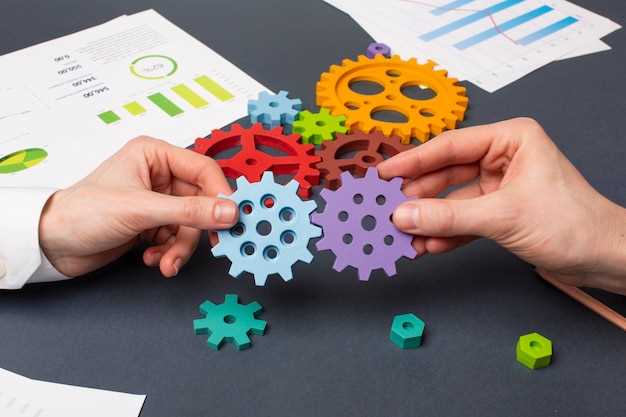
For enthusiasts of the Volkswagen Corrado, achieving seamless shifting is essential for enhancing the driving experience. A significant factor in this process is the performance of the synchros, which play a crucial role in matching the speeds of the gears during engagement. Over time, these components may wear out, leading to difficulty in gear changes and a less engaging drive.
In this article, we will explore practical tips that can help optimize gear engagement in your Corrado. From assessing the condition of your synchros to employing effective maintenance techniques, these insights aim to improve not only the functionality of your gearbox but also the overall performance of your vehicle.
By implementing these strategies, owners can experience smoother shifting and more confident driving dynamics. Whether you’re a seasoned mechanic or a dedicated DIY enthusiast, these tips will guide you towards achieving optimal gear performance in your beloved Corrado.
Understanding Premium Synchro Mechanics
Premium synchro mechanics play a crucial role in enhancing the engagement and performance of gears in a transmission system. By meticulously synchronizing the rotation speeds of gear sets, synchros ensure smooth shifts and reduced wear on components.
Key components of premium synchro mechanics include:
- Synchro Rings: These rings are designed to match the speed of the gears before engagement, allowing for seamless transitions.
- Accelerated Friction Materials: High-quality friction materials improve the efficiency of the synchronization process, leading to quicker and more reliable shifts.
- Precision Machining: Components are manufactured with tight tolerances, ensuring a snug fit that enhances the overall function of synchros.
- Component Geometry: The design of the synchro cones and surfaces is optimized to maximize contact area, facilitating smoother engagement.
The importance of keeping synchros in premium condition cannot be overstated. Regular maintenance ensures that these components function correctly, and timely replacement helps to avoid potential transmission issues.
When operating a vehicle, understanding these mechanics can significantly impact the driving experience. Drivers can better appreciate how smooth gear shifts contribute to overall vehicle performance.
- Invest in high-quality lubricants to reduce friction.
- Consider upgrading to premium synchros for improved performance.
- Regularly inspect and replace worn-out parts to maintain optimal engagement.
In conclusion, mastering the nuances of premium synchro mechanics can lead to enhanced gear engagement, better overall vehicle performance, and increased driving satisfaction.
Diagnosing Gear Shifting Issues
Diagnosing gear shifting issues is crucial for maintaining optimal performance in any vehicle. Several factors can contribute to problems in this area, and identifying the specific cause is key to a timely resolution.
First, listen for unusual sounds during the shifting process. Grinding or clunking noises may indicate wear in the transmission or misalignment in the gear linkage. Additionally, if the gears fail to engage smoothly, it may suggest a lack of lubrication, requiring inspection of the transmission fluid levels and quality.
Next, check the clutch functionality. A worn or improperly adjusted clutch can cause difficult shifting or even prevent gear engagement altogether. Ensure that the clutch pedal has the appropriate amount of free play and that the hydraulic system is functioning without leaks.
Look for any warning indicators on the dashboard that may signal transmission-related issues. If the check engine light is illuminated, running a diagnostic scan can help pinpoint the problem, allowing for targeted repairs.
Examining the gear shifter itself is another essential step. Loose or damaged components can hinder smooth operation. Inspect all connection points and the shifter mechanism for signs of wear or damage.
Finally, consult the vehicle’s manual for specific troubleshooting recommendations related to gear shifting. Manufacturer guidelines often provide insights into common issues and maintenance tips tailored to the vehicle model.
Adjusting Gear Linkage for Optimal Engagement

To achieve optimal engagement of the gears in your Corrado, adjusting the gear linkage is essential. Proper adjustment ensures that synchros achieve the right engagement, leading to smoother shifting and prolonged gearbox life. Begin by inspecting the gear linkage for any wear or damage, as faulty components can hinder performance.
Start the adjustment process by ensuring that the vehicle is on a level surface and the gear lever is in the neutral position. This step sets a baseline for proper alignment. Locate the adjustment points on the gear linkage, typically found near the transmission. Use the manufacturer’s specifications for measurement to determine the proper length of the linkage rod. A misaligned rod can cause difficulty in shifting and affect synchro engagement.
After adjusting the length, focus on the pivot points and bushes. Over time, these components can wear, resulting in play that hinders precise gear selection. Replacing worn parts not only improves engagement but also enhances overall driving comfort. Be sure to lubricate the moving parts to reduce friction and ensure smooth operation.
Once adjustments are made, conduct a thorough test by shifting through all gears. Pay attention to how the synchros engage; they should do so with minimal resistance. If you notice grinding or hesitation, further adjustment may be necessary. Revisit the linkage settings and fine-tune until optimal gear engagement is achieved.
Regularly revisiting gear linkage adjustments can maximize the performance of your Corrado, ensuring that every gear shift is crisp and reliable. Properly engaged synchros will lead to a more enjoyable driving experience, eliminating the frustration that comes from gear misalignment.
Maintaining Synchros for Enhanced Performance
Properly maintained synchros are crucial for smooth gear shifting and overall performance in vehicles equipped with a manual transmission. Synchros facilitate the engagement of gears during shifting by matching the speed of the gear to the speed of the engine, allowing for seamless transitions without grinding. Ensuring these components are in optimal condition is essential for enhancing driving experience.
Regular inspection of synchros should be part of routine maintenance. Look for signs of wear such as rough edges, cracks, or discoloration. If any structural damage is noted, it’s advisable to replace the affected synchros to prevent further gear engagement issues.
Additionally, keeping the transmission fluid at optimal levels and ensuring it is clean greatly affects synchro performance. Old or contaminated fluid can lead to inadequate lubrication, causing synchros to wear out prematurely. It is recommended to replace the transmission fluid as per the manufacturer’s guidelines or sooner if the fluid appears discolored or contains debris.
Driving habits also play a role in synchro longevity. Smooth and deliberate shifting techniques help reduce the strain on these components. Avoiding high-rev shifts and aggressive driving can significantly extend the life of synchros. Practicing proper double clutching during downshifts can further enhance synchro effectiveness and improve gear engagement.
In summary, maintaining synchros involves regular inspection, fluid management, and mindful shifting. By prioritizing these practices, drivers can ensure that their gear engagement remains smooth and efficient, ultimately enhancing the overall performance of the vehicle.
Common Mistakes in Gear Shifting Techniques

One of the most prevalent mistakes in gear shifting is failing to fully engage the clutch before changing gears. This can lead to grinding noises and can damage the transmission. Properly pressing the clutch pedal to the floor ensures a smooth transition between gears.
Another common error is shifting too quickly. Rushing through gear changes without allowing the engine to adjust can cause unnecessary strain. It’s crucial to synchronize your shifts with engine RPMs to ensure seamless engagement and avoid stalling.
Inadequate throttle control during shifting can also create problems. Drivers may either accelerate too aggressively or not enough, resulting in jerky movements. Smoothly balancing the throttle while shifting promotes better gear engagement and enhances driving experience.
Many drivers also neglect to double-check their gear selection before moving off. This oversight can lead to starting in the wrong gear, which may hinder performance or cause engine strain. Taking a moment to confirm the desired gear is an important habit to develop.
Ignoring the importance of feedback from the vehicle can result in poor shifting techniques. It’s essential to listen to the engine’s sound and feel the response of the car when changing gears. Not paying attention to these indicators can lead to improper shifts and gear misalignment.
Finally, failing to maintain the proper gear for varying driving conditions is a significant mistake. Using a higher gear in low-traction scenarios, such as wet or icy roads, can compromise control. Choosing the appropriate gear according to the conditions enhances both safety and performance.
Upgrading Components for Better Gear Interaction
Improving gear engagement in your vehicle often hinges on the quality of the components involved in the shifting process. One of the most critical aspects is the synchros, which play a vital role in facilitating smooth gear transitions. Upgrading these elements can significantly enhance the driving experience.
High-performance synchros are designed to reduce friction and improve the speed at which gears engage. This can make a noticeable difference during shifting, especially under load or during aggressive driving. Selecting materials that offer better durability and heat resistance can also help maintain shifting performance over time, reducing wear and the need for frequent replacements.
Another essential component to consider is the shift linkage. An upgrade to a more precise, shorter-throw shifter can deliver a more direct connection between the driver and the transmission, enhancing responsiveness. This modification often provides a satisfying tactile feedback that reinforces driver confidence during gear changes.
Don’t overlook the transmission fluid either. Opting for high-quality synthetic fluids can improve lubrication and reduce drag on the synchros, further enhancing shifting performance and overall gear interaction. Regular maintenance and fluid changes also play a crucial role in ensuring that the components operate smoothly together.
In summary, upgrading components such as synchros, shift linkages, and transmission fluids can lead to a remarkable improvement in gear interaction. Each of these elements contributes to a more enjoyable and efficient driving experience, ensuring that each shift is met with precision and reliability.










